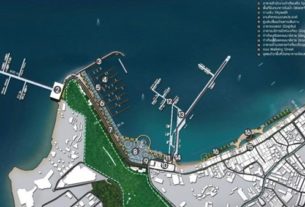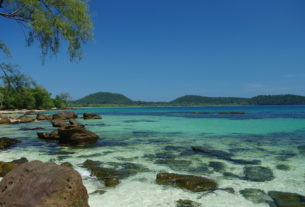Put a question to Bangkok people as to whether they would like a promenade along the Chao Phraya River where they could go for a casual walk, and the answer will likely be positive.
Ask cyclists who are risking their lives on the city’s mean streets if they want a chance to cycle along safe and wide riverfront bike paths; they will probably say yes as well.
On the surface, the New Landmark of Thailand scheme which involves construction of seven-kilometre walkways and bike lanes along both banks of the Chao Phraya may appear desirable.
The devil is in the detail, however. Before the public is even informed about what the walkways and bike lanes’ construction will entail and whether it will be cost-effective, the cabinet has already approved 14 billion baht for the scheme and planned for its construction to begin in January next year.
It is an imprudent way to start a project, let alone one that is likely to drastically affect the capital’s most iconic river.
The government may have forgotten that the Chao Phraya itself is a landmark of Bangkok. It is also a public waterway, a common property for Thais. To reshape its banks and permanently alter its appearance and ecosystem requires not only a careful study on long-term impacts but also extensive consultation with members of the public.
Basic information about the project is troublesome.
The Chao Phraya promenade, reportedly initiated by Prime Minister Prayut Chan-o-cha based on his impressions of South Korea’s Han River comprehensive development project consisting of a series of parks, walkways and recreational areas, will be built on a stretch between the Rama VII and Pin Klao bridges during its first phase.
The second phase will run from the Rama VII to Phra Nang Klao bridges.
According to news reports, the project will see the construction of a 19.5-metre-wide bridge along both banks of the river where walkways and bike lanes will be located.
The superstructure will sit 2.8 metres above the water.
This aspect alone should have prompted the authorities to do a thorough environmental impact assessment, make sure that the superstructure will do no harm to the river’s ecosystem and communicate the result to the public well before approving its construction.
The next question is cost-effectiveness.
The approved budget for the Chao Phraya landmark project is 14 billion baht for a construction that covers 14km. That is one billion baht per kilometre of walkways and bike lanes. The government should provide a clear explanation as to why this project justifies this amount of taxpayers’ money before approving it.
It is understood that the government has been secretive about the promenade project because it will involve the forced eviction of more than 200 communities, a dozen temples, schools, privately-owned piers and almost 20 “important sites” that have not been identified.
The autocratic way of handling large-scale projects which is becoming a signature style of this government is a sure-fire way to generate suspicion and mistrust.
Opposition is already mounting against the Chao Phraya landmark scheme from architectural associations, engineers, environmentalists and ordinary citizens. A petition to Gen Prayut to abort the scheme has already been lodged with the website change.org.
The Chao Phraya is a crucial river system and a lifeline to millions of people who depend on it for their living. The government has no right to change it without public approval.
Source: http://www.bangkokpost.com/opinion/opinion/563031/river-project-full-of-hubris

